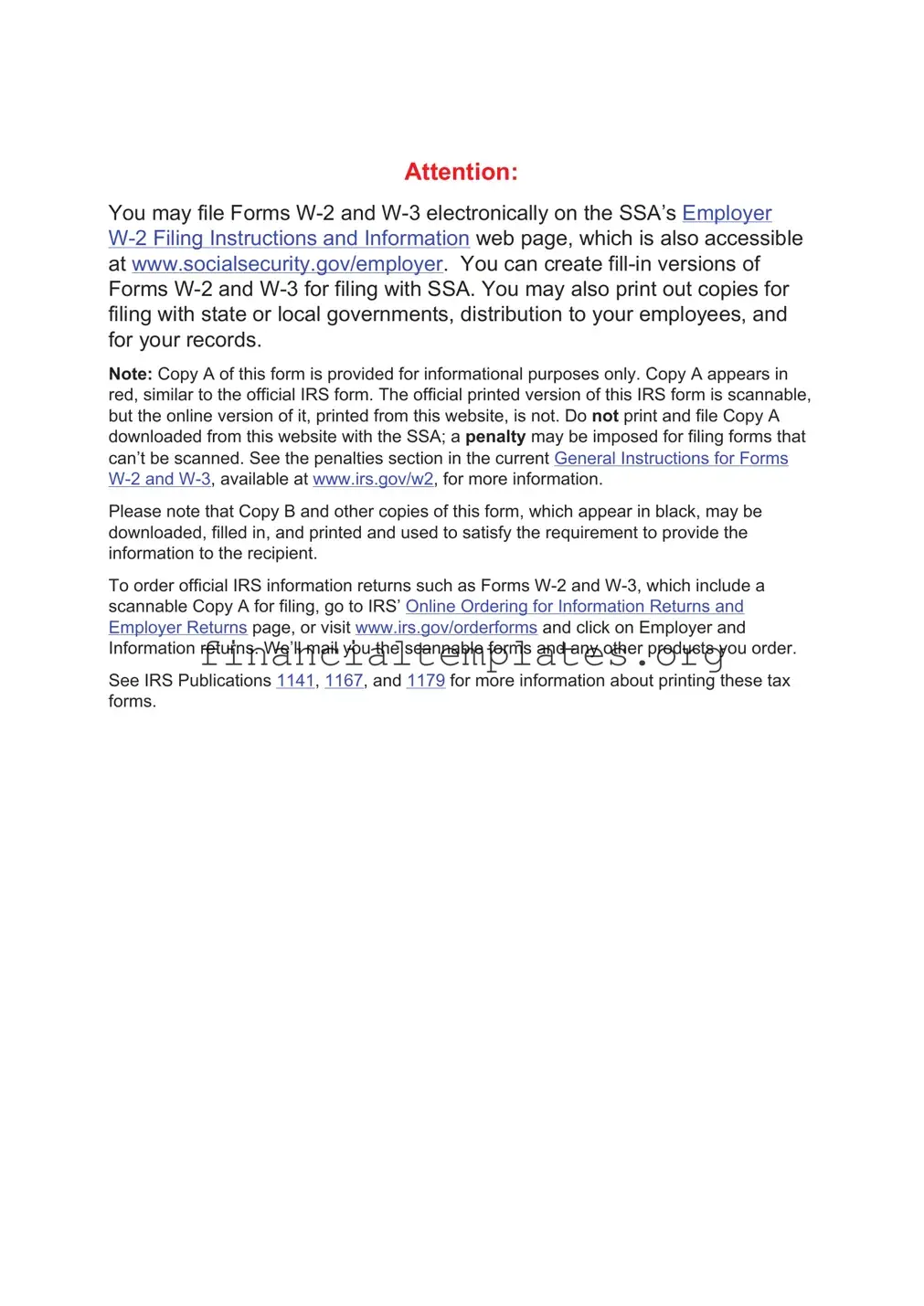The IRS W-3 form, also known as the Transmittal of Wage and Tax Statements, is quite unique in its function but shares similarities with other documents in terms of purpose and data handling. One of these is the IRS Form W-2, "Wage and Tax Statement", which summarizes an employee's annual earnings and taxes withheld. Where the W-3 serves as a summary document for all W-2 forms filed by an employer for the year, each W-2 form relates to an individual employee's income and tax deductions, making them complementary in their use.
Similarly, IRS Form 1096, "Annual Summary and Transmittal of U.S. Information Returns," echos the W-3's purpose but in the realm of informational returns like 1099s, which report various types of non-employment income. Both serve as cover sheets for submitting multiple forms of a specific kind, ensuring that the IRS receives a concise summary alongside the detailed reports.
Another counterpart is the IRS Form 941, "Employer's Quarterly Federal Tax Return", which employers use to report income taxes, Social Security Tax, or Medicare Tax withheld from employees' paychecks. While the Form 941 is filed quarterly, it complements the annual overview provided by the W-3, offering a regular update on withholdings that culminates in the yearly summary.
The IRS Schedule K-1 (Form 1065) documents a partner's share of income, deductions, credits, etc., in a partnership. While it's specific to partnership business structures, it similarly compiles individualized tax information that contributes to the aggregate data, akin to how W-2 forms aggregate into the W-3.
IRS Form 940, "Employer's Annual Federal Unemployment (FUTA) Tax Return," parallels the W-3's annual reporting but focuses on unemployment tax obligations of the employer. Although it covers a different tax, both forms ensure employers annually reconcile and report specific tax liabilities to the federal government.
Form 1095-C, "Employer-Provided Health Insurance Offer and Coverage," another IRS document, reports information about health insurance provided to employees. Like the W-3, it furnishes a yearly summary to both the IRS and the individual, albeit focusing on healthcare coverage rather than income and tax withheld.
The IRS Form 1042-S, "Foreign Person's U.S. Source Income Subject to Withholding," reports income paid to foreign persons, including individuals, corporations, partnerships, or non-resident alien individuals. This form, while catering to a different audience, mirrors the W-3's objective of summarizing annual information for both tax reporting and recipient notification purposes.
IRS Form W-4, "Employee's Withholding Certificate," indirectly correlates with the W-3 by initiating the process of determining how much federal income tax to withhold from an employee's paycheck. Although it’s more about setting up payroll deductions rather than summarizing them annually, it's essential for the data that eventually feeds into the W-2 and therefore the W-3.
State Unemployment Tax Act (SUTA) reports, while varying by state, also share a purposeful resemblance to the federal IRS W-3. These state-specific forms require employers to report wages paid to employees and calculate unemployment insurance taxes, reflecting the condition of fulfilling regional tax obligations in a manner akin to federal requirements.
Finally, IRS Form 990, "Return of Organization Exempt From Income Tax," is used by nonprofit organizations to provide the IRS with annual financial information. Though its primary audience and purpose differ, it embodies the concept of annual reporting and transparency that is fundamental to the W-3, showcasing the diverse applications of tax reporting across different entities.
In summary, while each of these documents has its specific audience, purpose, and set of information, they all share the common thread of compiling and reporting important financial data to the IRS. Whether it's for an individual, a specific group of people, or about specific types of transactions, each form contributes to the broader ecosystem of tax reporting and compliance similar to the way the W-3 encapsulates a year's worth of wage and tax data for businesses.


